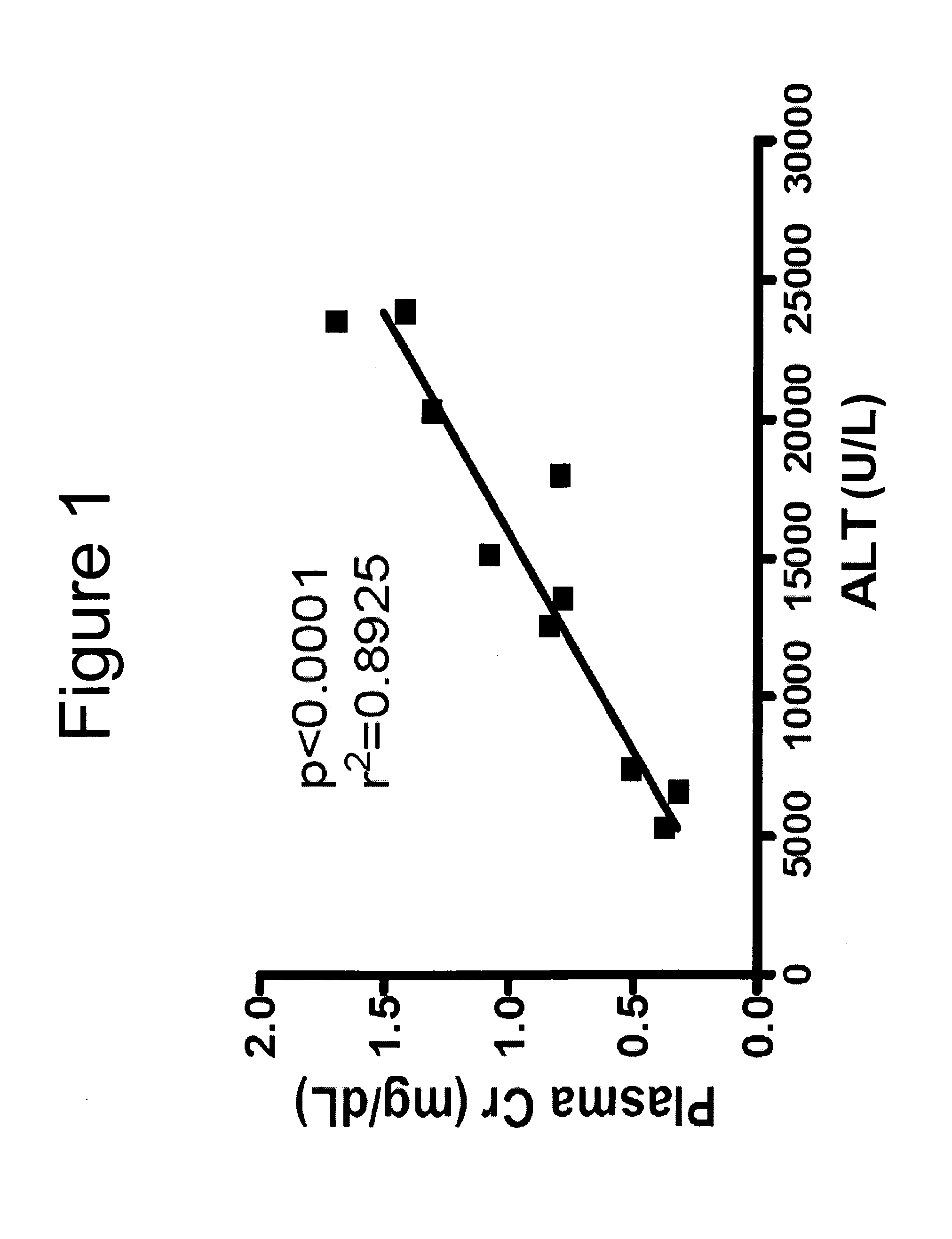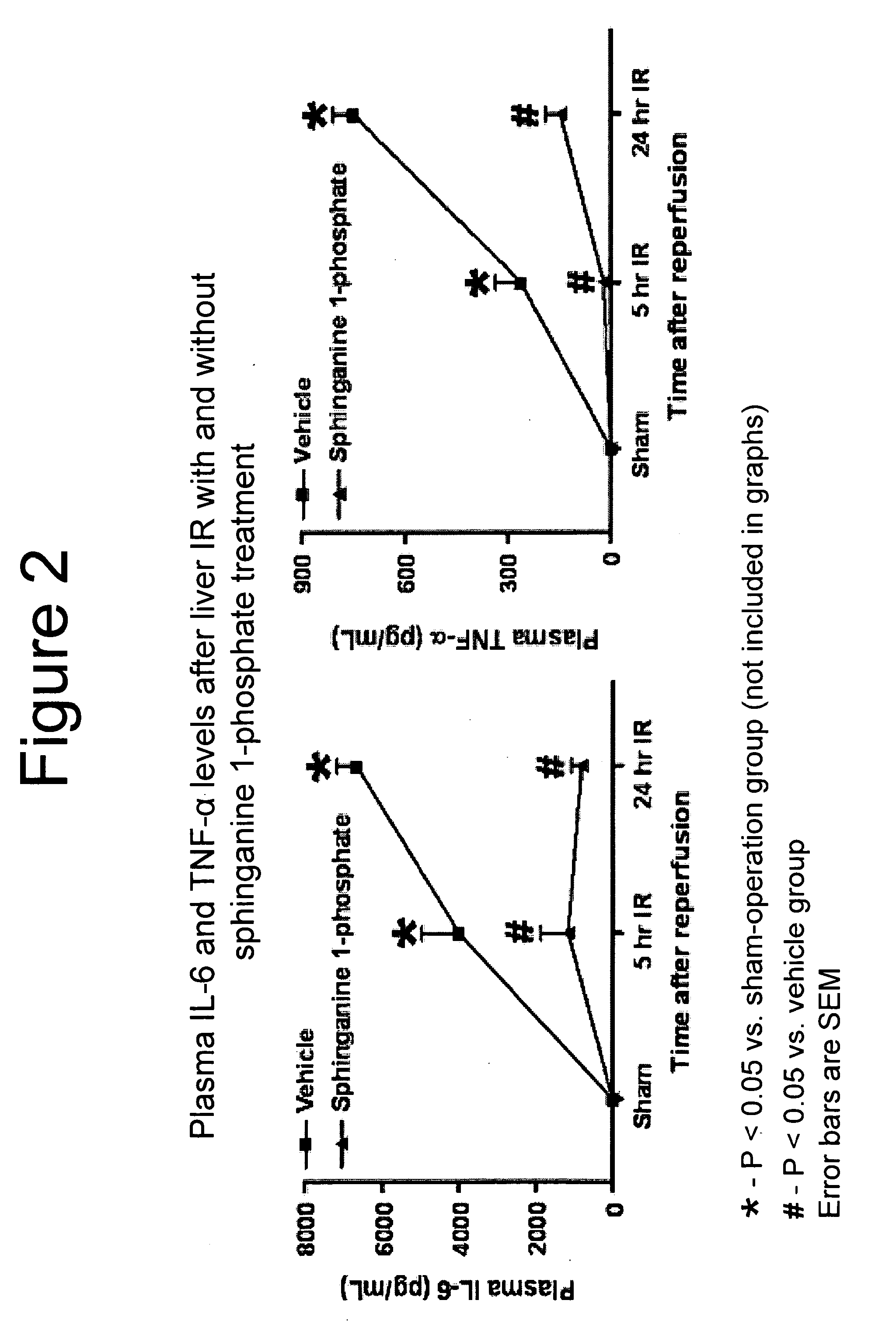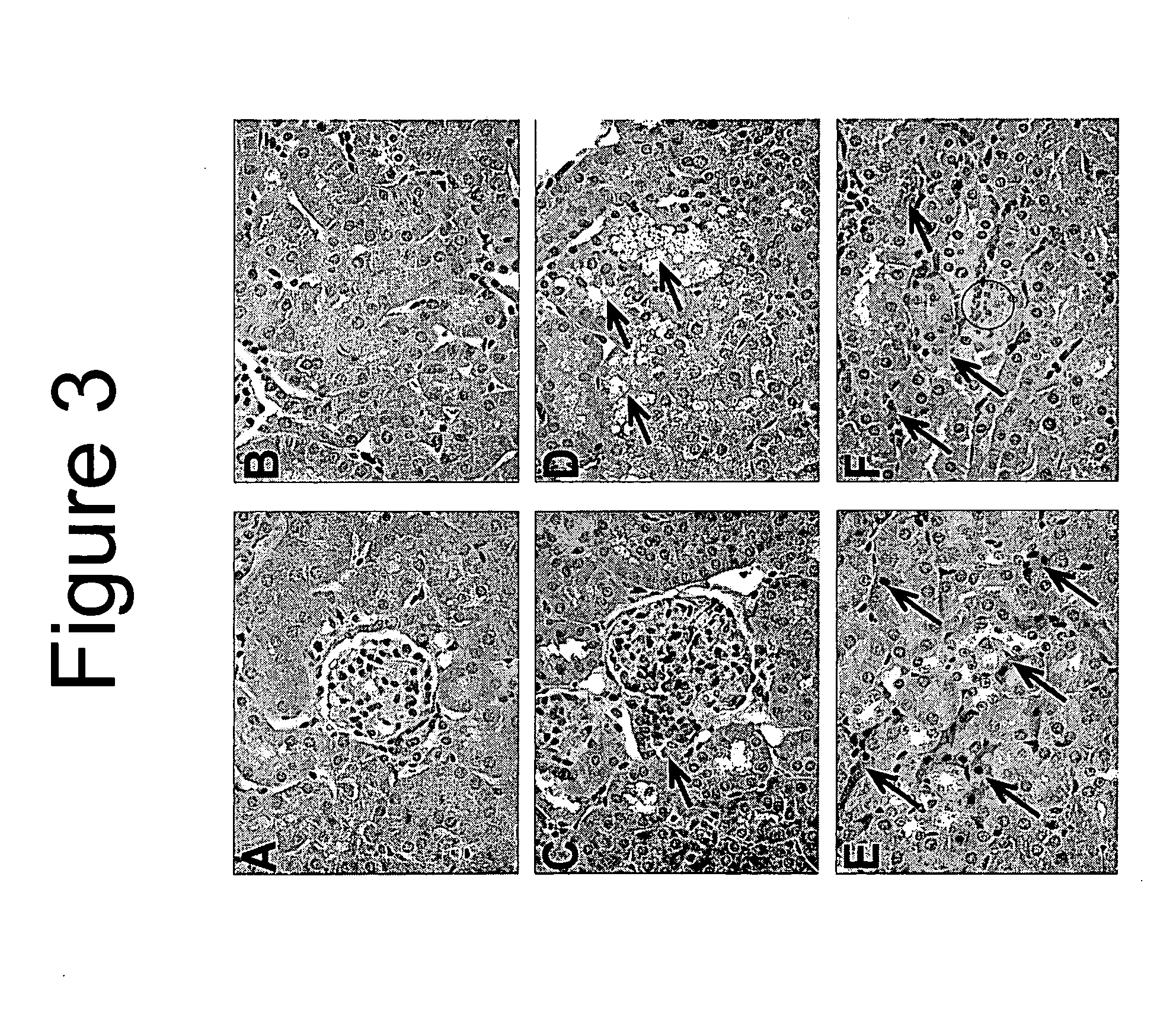Diagnosis and therapy of organ dysfunction using sphinganine-1-phosphate
a technology of sphinganine and organs, applied in the field of organ dysfunction diagnosis and treatment, can solve the problems of acute renal failure, a sudden loss of the kidney's ability to excrete waste, and the internal environment of the living body cannot be maintained in normal conditions, and achieve the effect of reducing, inhibiting or preventing kidney endothelial cell injury
- Summary
- Abstract
- Description
- Claims
- Application Information
AI Technical Summary
Benefits of technology
Problems solved by technology
Method used
Image
Examples
example 1
Murine Model of Liver Ischemia Reperfusion (Hepatic IR)
[0114]Mice were anesthetized with intraperitoneal pentobarbital (50 mg / kg or to effect). Mice were placed under a heating lamp and on a 37° C. heating pad. After a midline laparotomy and intraperitoneal application of 20 U heparin, left lateral and median lobes of the liver were subjected to ischemia with a microaneurysm clip occluding the hepatic triad above the bifurcation. This method of partial hepatic ischemia results in a segmental (˜70%) hepatic ischemia but spares the right lobe of the liver and prevents mesenteric venous congestion by allowing portal decompression throughout the right and caudate lobes of the liver. The liver was then repositioned in the peritoneal cavity in its original location for 60 minutes. The liver was kept moist with gauze soaked in 0.9% normal saline. The body temperature was monitored by an infrared temperature sensor (Linear Laboratories, Fremont, Calif.) every 10 min. and maintained at 37° C...
example 2
Murine Model of Renal and Hepatic Failure Following Liver IR
[0115]Preliminary studies showed that C57BL / 6 mice subjected to 60 min. of ˜70% liver ischemia and 24 hr reperfusion (liver IR) developed severe liver dysfunction with significantly elevated plasma ALT levels (15076±1174 U / L, N=6, p2=0.8925). Liver IR injury in mice also increased the plasma levels of TNF-α (852±93 pg / ml plasma, N=5 vs. undetectable levels for sham-operated mice, N=5), a cytokine implicated in multiorgan dysfunction after liver IR (Tsung et al., 2005), as well as plasma levels of interleukin 6 (IL-6). See FIG. 2.
[0116]Liver IR-induced AKI in mice shared similar histological changes observed in human AKI associated with liver failure, as observed in H&E slides of kidney sections taken from the mice (see FIG. 3). Multifocal acute tubular injury including individual cell necrosis involving the juxtamedullary proximal tubules of the S3 segment was observed. In addition, the cortical tubules exhibited focal tubu...
example 3
Serum Sg1P Levels Drop after Liver IR in Mice
[0120]It was postulated that depletion of sphingosine-1-phosphate (S1P), an endogenous molecule well known to protect against endothelial dysfunction, may explain the increased renal endothelial damage after liver IR. Therefore, plasma levels of S1P (in pmol / μl plasma) were measured in mice after liver IR or sham-operation utilizing HPLC. Quantitative analysis using HPLC to measure S1P levels was be performed as previously described by Min et al. (2002) with enzymatic dephosphorylation of S1P by alkaline phosphatase and subsequent analysis of o-phthalaldehyde derivatives of the liberated sphingosine bases. As shown in FIG. 5, plasma levels of S1P were not decreased in mice subjected liver IR as compared to sham-operation. However, HPLC analysis revealed that another sphingolipid metabolite, sphinganine-1-phosphate (Sg1P), was decreased following liver IR (see FIG. 5).
[0121]Additional experiments summarized in Table 1 below further confirm...
PUM
| Property | Measurement | Unit |
|---|---|---|
| infrared temperature sensor | aaaaa | aaaaa |
| diameter | aaaaa | aaaaa |
| pore size | aaaaa | aaaaa |
Abstract
Description
Claims
Application Information
 Login to View More
Login to View More - R&D
- Intellectual Property
- Life Sciences
- Materials
- Tech Scout
- Unparalleled Data Quality
- Higher Quality Content
- 60% Fewer Hallucinations
Browse by: Latest US Patents, China's latest patents, Technical Efficacy Thesaurus, Application Domain, Technology Topic, Popular Technical Reports.
© 2025 PatSnap. All rights reserved.Legal|Privacy policy|Modern Slavery Act Transparency Statement|Sitemap|About US| Contact US: help@patsnap.com



